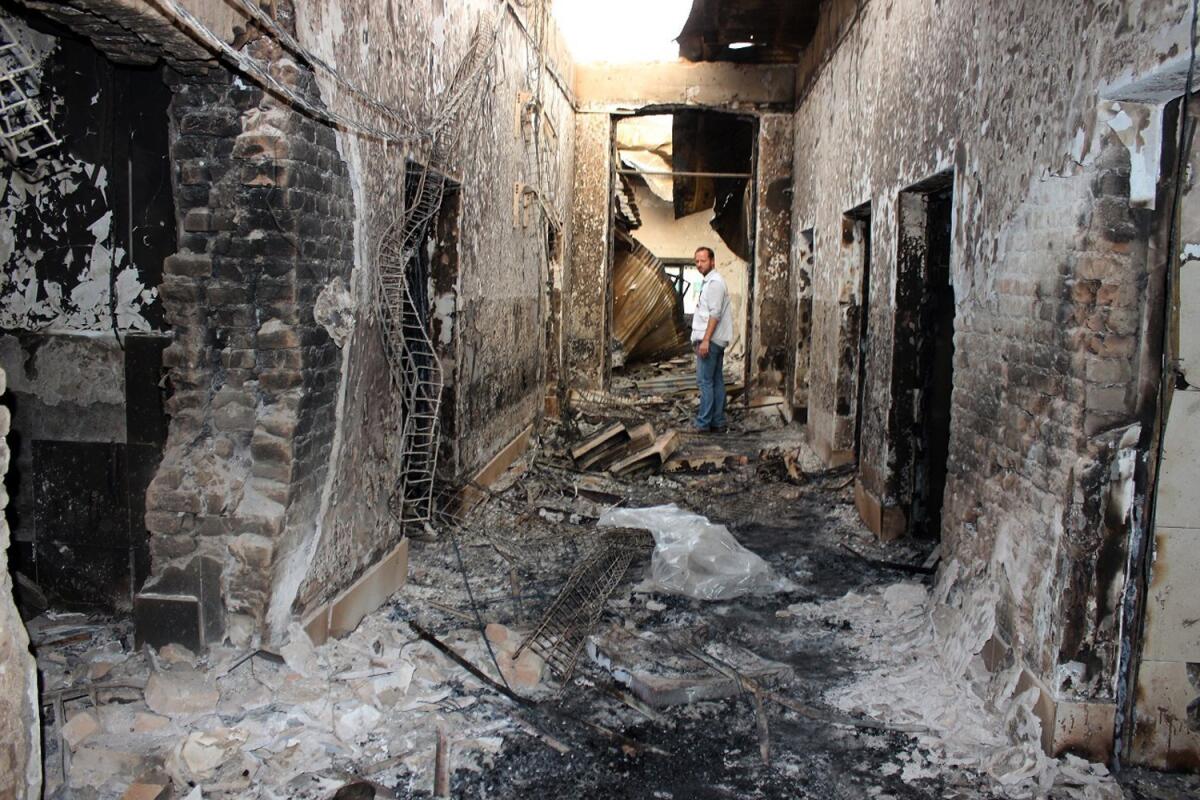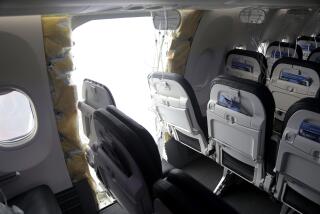Pentagon inquiry finds human, technical errors led to Kunduz hospital airstrike

In this Oct. 16, 2015, file photo, an employee of Doctors Without Borders stands amid the charred remains of the medical charity’s hospital after it was hit by a U.S. airstrike in Kunduz, Afghanistan.
A monthlong Pentagon investigation has blamed a series of human errors and technical malfunctions for the deadly U.S. gunship attack on an international aid hospital in the Afghan city of Kunduz, a senior military official briefed on the investigation said Tuesday.
The special operations AC-130 gunship had sought to attack a building suspected of being used as a base by Taliban insurgents, but the location the U.S. crew had been given turned out to be an open field.
The crew decided to open fire on a nearby large building, not knowing that it was a Doctors Without Borders hospital, said the official, who spoke on condition of anonymity in discussing the report before its official release.
NEWSLETTER: Get the day’s top headlines from Times Editor Davan Maharaj >>
An onboard targeting computer that might have warned the gunship crew that the building was a hospital, and thus off limits, was malfunctioning, the investigation has found. And because the gunship had been diverted from another mission, the crew had not been briefed on the location of the hospital.
The Oct. 3 airstrike lasted more than an hour, killed at least 30 people, mostly doctors and patients and collapsed large parts of the hospital.
The findings of the investigation could result in court-martial proceedings against some U.S. military personnel, but a decision has not yet been made, the officer said. No individuals will be named in this report, officials said.
“A combination of human and technical errors led to this disastrous strike,” said the military officer. A declassified summary of the report is scheduled to be released Wednesday in Kabul, the capital of Afghanistan. The findings were first reported by the New York Times.
The Pentagon’s acceptance of responsibility for the mistaken airstrike is unlikely to satisfy critics, including Doctors Without Borders, which has called for an outside investigation of the attack, saying it was probably a war crime.
Nor is the unclassified summary likely to answer all of the questions about what went wrong, including whether the errors identified in the report constitute criminal acts and why the crew members opened fire when it appears they had reason to be uncertain they had the correct target.
According to the report, no U.S. military personnel were in visual range of the hospital when Afghan forces requested the airstrike, claiming they were under fire.
U.S. officials now believe the insurgent fire was coming from a building, several hundred yards away from the hospital, that had been the Kunduz headquarters of the Afghan intelligence service until it was taken over by militants.
When the call for help came from the Afghan troops, a U.S. special forces team in another part of Kunduz called in the strike. The Afghan forces had not provided map coordinates of the captured intelligence service headquarters. Instead they had described its location, and the U.S. special operations team passed the information by radio to the AC-130.
When the aircraft neared Kunduz but was still beyond firing range, the crew took an initial look using long-range video cameras at what they thought was the proper target, the officer said.
Seeing only an open field, they “went to the nearest building,” thinking that was the target identified by the Afghan forces, the officer said. “They didn’t get a good alignment on the target,” he said.
When the gunship flew closer to the location, the crew members did not reassess whether they had identified the proper location, the officer said.
It remains unclear why the crew opened fire on a building where there was apparently no sign of an active firefight, despite being called in after Afghans claimed they were being attacked. An AC-130 is normally equipped with infrared surveillance cameras capable of detecting gunfire on the ground.
See the most-read stories this hour >>
Just after 2 a.m. on Oct. 3, the gunship opened fire. The aircraft made multiple passes over the hospital, the largest building in a compound containing half a dozen other structures, firing heavy munitions that left the hospital in flames. In several cases, people running from the building were gunned down, according to Doctors Without Borders.
Officials of the medical organization have said repeatedly that no gunfire was coming from the hospital compound and that although firefights had occurred nearby earlier in the day, no fighting was underway when the airstrike took place.
The attack destroyed the main hospital building, where medical personnel were catching up on a backlog of surgeries, taking advantage of the first quiet night since Taliban forces seized control of Kunduz five days earlier.
Survivors described earth-shaking explosions that engulfed the building in flames.
Doctors Without Borders, known by its French initials MSF, had reminded the U.S. military of the precise coordinates of the hospital multiple times in the days before the airstrike, a warning acknowledged in the military investigation, the officer said.
When the attack began, MSF representatives in Washington and Kabul made frantic attempts to get the bombing stopped. At least 15 calls and text messages were exchanged with U.S., Afghan, United Nations and Red Cross officials, according to a log of the communications included in the report.
Nearly an hour into the attack, MSF said, an American official in Afghanistan responded, “I’ll do my best, praying for you all.”
But the U.S. officer briefed on the report said the gunship “wasn’t called off because they thought they had the right location.”
Times staff writer W.J. Hennigan contributed to this report.
ALSO
Join a terrorist group, lose your citizenship
Ebola reappears in Liberia, leaving the question: Why?
Syria war pulls Russia and Turkey into a risky confrontation
More to Read
Start your day right
Sign up for Essential California for news, features and recommendations from the L.A. Times and beyond in your inbox six days a week.
You may occasionally receive promotional content from the Los Angeles Times.







